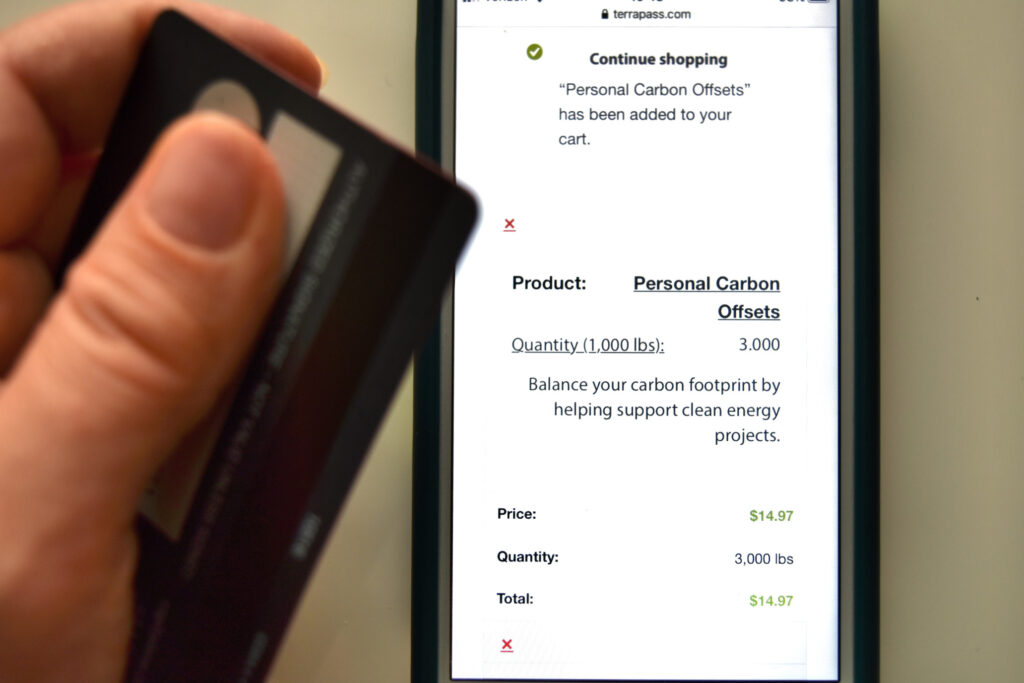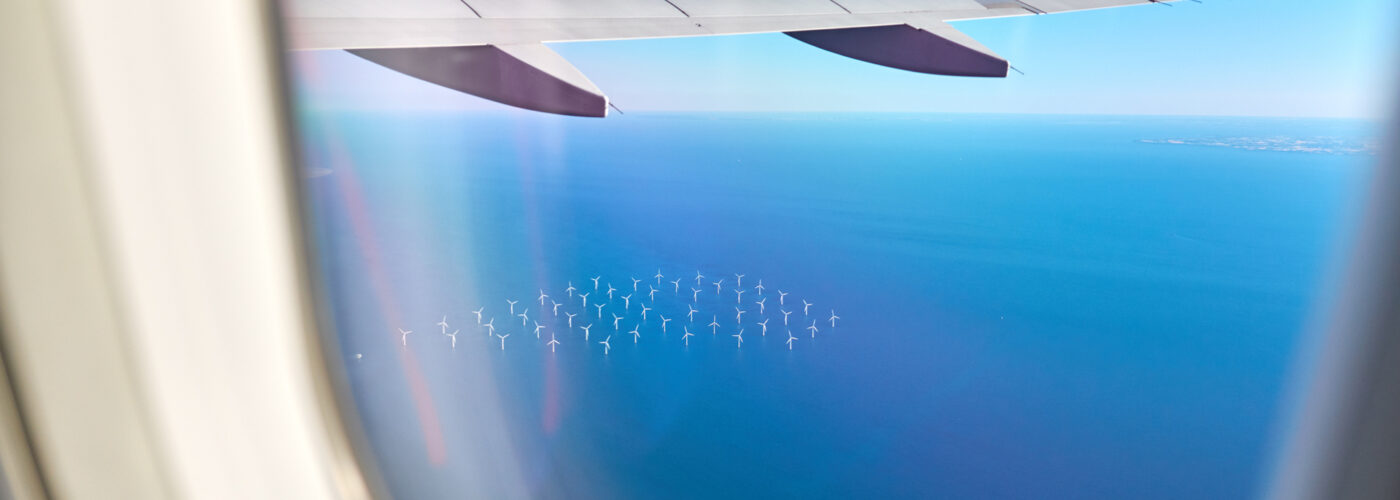When it comes to the environment and your travel, sometimes a mile is a mile is a mile.
Let’s start with this stat: planes are roughly comparable to cars in fuel consumption per passenger mile, at least with respect to carbon dioxide output. It makes for an easy comparison; a 60-hour cross-country car trip burns up about the same amount of fuel per passenger, and has the same “carbon footprint,” as a five-hour cross-country flight. According to the International Council on Clean Transport, aviation accounts for 2.4 percent of global CO2 emissions.
While we’re nowhere near where we should be in helping the planet, awareness of the negative impact that traveling has on the environment is increasing. So much that many travelers are increasingly investing in ways to neutralize the carbon emissions from their flights. A whole host of companies exist to help travelers go “carbon neutral.”
A Mile Is a Mile: Quick and Dirty Look at the Science
Air travel has a particularly negative impact on the atmosphere due to two factors, expressed herein as close to lay terms as I can muster: 1) planes emit a stew of other harmful gases in addition to carbon dioxide, and 2) gases released in the upper atmosphere where planes cruise have a much greater impact than gases released on the ground due to something called the “radiative forcing” effect. The sum total of the damage is about 1.9 times that of driving a relatively fuel-efficient car.
Radiative forcing notwithstanding, it’s much easier simply to call a mile a mile. Since most of us are doing so little about the problem already, to quibble over the exact radiative forcing effect is a bit like working inside the Beltway, where people would rather argue over how to do something than actually do it. As convenient as it would be out here in the real world to live that way, we can’t, so let’s use the mile = mile metric.
Thus, if the average American drives 10,000 to 15,000 miles each year, it takes only a trip to Europe for a West Coaster, a trip to Hawaii for an East Coaster or a couple of cross-country flights to do as much damage (or more) as you do during an entire year of commuting and cruising in your car.
Politics Cedes to Science (Finally)
While climate change has considerable staying power as a hot-button topic among politicians, virtually no reputable scientists and increasingly few citizens see it merely as a political issue any longer. After years in the political wilderness, climate change has come to be accepted as scientific fact by most Americans, or close enough to fact to act.
As “flight-shaming” becomes a thing in travel, many travelers are willing to do something about it, but are we willing to stop traveling? In this global economy, and in a country where extended families might live all over the country, forgoing air travel entirely isn’t going to happen. And the greater benefits of global travel are multifold and diverse, whether you focus on cultural, political or economic factors. So what can we do about it?
Carbon Offsetting: Solution or Panacea?
For better or worse, the concept of “carbon offsetting” has gained considerable currency in the media as one way to mitigate the environmental impact of many facets of modern living. The concept is fairly simple: for every mile you travel, or rather every ton of carbon dioxide your mode of travel causes to be released into the atmosphere, you pay a small fee to enable other folks to work on solutions to mitigate the damaging ecological effect of your travel.
There are some great things about carbon offsetting:
Unlike a lot of environmental science, the concept is extremely easy to grasp. Spew a bunch of gases into the atmosphere + plant a tree that can chew up those gases = zero-sum total.
To let the market help solve some of its own problems is a promising long-term approach; several companies mentioned below are making it very easy to participate, which is a critical component of any popular movement.
For insanely busy working Americans who simply do not have the resources to plant 40 trees every time they fly to Chicago, paying a very reasonable amount to have someone else do this work is both effective and realistic.
But there are also some problems:
For one, the majority of online carbon calculators are standard, and as airlines do more in minimizing their carbon footprint, “No account is taken of the airline and whether it is an airline that has taken more measures to reduce emissions, or not. Aircraft type is also not being taken into account, yet we know that one aircraft can be massively more efficient than another,” reports the OAG (Official Aviation Guide). We need new, industry-wide metrics to help travelers understand what their actual impact is and how to make appropriate decisions whether it’s to fly at all or to choose a different airline or route.
Considerable debate remains on how best to spend the funds: wind farms or tree farms? Solar solutions or “manure into methane”? Indigenous reforestation or “tree cultures”? While tree planting is one of the most popular options for carbon offsets—not to mention one of the easiest for average people to understand—many experts point out that trees only sequester carbon until they die, at which point the carbon will be re-released into the atmosphere. Other debates center around questions of whether the companies and agencies doing the work are actually delivering on their promises.
As of late, many airlines, and other travel-industry providers, are taking their impact on the environment more seriously and participating in programs that help make their business models more sustainable. One of these ways is by offering carbon-neutral flights (read more on that, here) that use biofuel, other airlines are forming industry “eco-partnerships”, like Etihad and Boeing for example, as well as investing in newer, more efficient aircraft fleets. The good news here is that these major corporations are taking responsibility, but the reality is, both travelers and providers need to do their part to have an impact.
Now at a Booking Site Near You

Carbon offsetting has reached the mainstream, most prominently on some of the major travel booking sites, including Expedia and Travelocity. Expedia has a partnership with TerraPass, a for-profit carbon offsetting company; Travelocity has a partnership with The Conservation Fund’s Go Zero program, a nonprofit effort.
(The issue of whether a nonprofit is better than a commercial company for this type of work is also a divisive issue in the world of general do-gooding; many believe that adding a profit motive to what has typically been “charity work” is the best way to improve and sustain these efforts. On the other hand, one obvious upside of using the nonprofit is that you can deduct the expense at tax time.)
We’ll walk you through an example of how carbon offsets work with Expedia: When booking a flight on Expedia, the last screen you see before confirming the purchase of your trip to Knoxville is the option to “Customize your trip to Knoxville,” which includes such “Featured Activities and Services” as the Expedia Flight Protection Plan, an airport lounge pass, a subscription to a glossy travel magazine and, sure enough, the option to “Fly Green with TerraPass,” one of the leading travel carbon-offsetting companies.
Based on calculations of the carbon footprint of your trip (typically measured in cubic tons, which you can calculate on the TerraPass site), Expedia and TerraPass offer multiple contribution levels to account for the length of your flight.
International and Domestic Airlines’ Carbon Offset Programs
There are numerous sites that offer carbon offsets, and a few airlines that offer the option to offset air travel.
Some of the stand out programs from international airlines include the following: EasyJet now offsets the carbon from the fuel used on every single flight by investing in selected projects, like forest regeneration and solar energy. Qantas allows its Frequent Flyer and Business Rewards customers to earn 10 Qantas Points for every dollar spent on offsetting, plus, the airline matches every customer’s contribution to carbon offsetting, dollar for dollar. Cathay Pacific’s FLY Greener program helps customers calculate their carbon offset and purchase plans on their site when booking. Other international airlines that offer customer-facing carbon offset purchasing options include: Air New Zealand, Austrian, China Airlines, EVA Air, Japan Airlines, Lufthansa, and more.
For domestic airlines, Alaska Airlines and JetBlue link to Carbonfund.org, United‘s Eco-Skies CarbonChoice program links to Conservation International, Delta has its own program (and in addition purchases its own offsets), and Air Canada sends travelers to Less Emissions.
Point is, no matter where you’re flying, you can probably find an airline offering offsets. You can also access these sites without going through the airlines. Your other options include The Conservation Fund and TerraPass. Or, to simply calculate your carbon impact and learn more about ways you can reduce it rather than purchasing offsets, visit COTAP.org. It’s also worth noting that just because an airline isn’t listed here, doesn’t mean that it’s not participating in other environmental-friendly initiatives.
If you prefer not to mingle your travel booking with your charitable and environmental efforts, or if you want to extend your carbon offsetting donations to other parts of your life, you can visit the Web sites of any number of competing carbon offsetting outfits to calculate your carbon consumption and make your contribution directly. See our comprehensive list of carbon offset companies.
FAQs on Carbon Offsetts for Flights
How much does carbon offsetting cost?
Most websites allow you to offset in two ways. The first is to donate a preselected amount ($5, $10, $20). The second is to calculate your carbon emissions based on your travel and/or activities to determine a specific donation amount. When you purchase carbon offsets through an airline, you often only get the option of offsetting travel, but sites such as Carbonfund.org offer the option of offsetting air travel, car travel, your home, or any combination.
When offsetting air travel, some sites give you the option of offsetting the effects of radiative forcing as well. Radiative forcing occurs at higher altitudes when an aircraft’s contrails form cirrus clouds, which more than double the emissions’ effect on global warming. Naturally, opting to offset radiative forcing costs more.
How is carbon offsetting calculated?
The way emissions are calculated varies by site, and most give an explanation as to how they generate the cost of an offset. Carbonfund.org uses statistics from the U.S. Department of Energy’s Energy Information Administration, while Cathay Pacific uses historic fuel consumption data to determine carbon dioxide emissions, then divides this number by the total passengers on the plane (based on historical averages) and the distance flown to determine the amount of carbon dioxide per passenger kilometer. Qantas takes it a step further and factors in emissions from ground operations such as catering centers, terminals, ground vehicles, and engineering facilities. There is no industry standard as to how emissions are calculated, so there is potential for variation.
Where does my money go and can I choose where it goes?
Once you purchase a carbon offset, your donation supports renewable energy sources, energy efficiency, and/or reforestation projects. Some sites allow you to choose what types of projects your money goes toward, while others choose for you. For example, both Carbonfund.org and Sustainable Travel International allow you to choose whether your donation goes toward reforestation/preventing deforestation, renewable energy, or energy efficiency projects.
How do I know my money is going to a reputable project?
- Do your research. Before you purchase offsets, review the organization and its projects.
- Look for nonprofit organizations and Gold Standard certified projects.
- Make sure the organization and its projects meet third-party certification standards and are verified and audited by third parties.
- Check that the organization retires carbon offsets instead of reselling them.
Other Ways to Offset Your Environmental Impact While Traveling
Reducing your environmental impact while traveling can be almost absurdly easy (and I’m not talking about driving without air-conditioning during summer, wearing down coats in your hotel room or other such unpleasantries):
When you leave your hotel room, turn down the heat or air-conditioning until you return, and turn off the lights.
Use the “no room service needed” option offered at many hotels. At home, you don’t change your bedsheets, use a different towel, vacuum perfectly tidy rugs or scrub your sink every single day, as is the case at even the most modest hotels. If everyone in every hotel in the U.S. were to use this option, the amount of water and energy saved on washing machines alone would have an impact.
Use public transportation when traveling. In many cities riding the subway, the Underground, the El trains and the like can be a wholly satisfying way to get to know your surroundings. Folks who zip from one tourist attraction to another in a taxi learn about exactly those things: taxis and tourist attractions. It’s all the actual living in between that makes a great city great.
You Tell Us: Have you ever purchased a carbon offset? Do you think they are a good idea? Share your thoughts and advice with us on social media and tag (@SmarterTravel) so we can see it!
More from SmarterTravel:
- The Truth About Carbon-Neutral Flights
- 12 Ways to Travel Sustainably and Still Have a Great Vacation
- 11 Endangered Bucket List Destinations (and How to Visit Them Responsibly)
Editor’s note: This story was originally published in 2017. It has been updated to reflect the most current information. Ashley Rossi and Kate Sitarz also contributed to this story.
We hand-pick everything we recommend and select items through testing and reviews. Some products are sent to us free of charge with no incentive to offer a favorable review. We offer our unbiased opinions and do not accept compensation to review products. All items are in stock and prices are accurate at the time of publication. If you buy something through our links, we may earn a commission.
Related
Top Fares From
Today's Top Travel Deals
Brought to you by ShermansTravel
Shop and Save with Country Inns...
Patricia Magaña
 Hotel & Lodging Deals
Hotel & Lodging Deals
$229 -- Chicago: Discounted Rates and...
Francesca Miele
 Hotel & Lodging Deals
$229+
Hotel & Lodging Deals
$229+
$188 -- Honolulu: Save on Oceanview...
Abigail Lamay
 Hotel & Lodging Deals
$188+
Hotel & Lodging Deals
$188+




